Popular categories
Looking for a yarn?

75% Wool, 25% Polyamide
from 2.30 £ /50g
Order DROPS Fabel from Wool Warehouse Direct Ltd

|
DROPS Fabel uni colour 75% Wool, 25% Polyamide |
2.30 £ /50g |
Order |

|
DROPS Fabel 75% Wool, 25% Polyamide |
2.40 £ /50g |
Order |

|
DROPS Fabel long print 75% Wool, 25% Polyamide |
2.60 £ /50g |
Order |
Clicking the ORDER button will redirect you to Wool Warehouse Direct Ltd website
Order DROPS Needles & Hooks
Clicking the ORDER button will redirect you to Wool Warehouse Direct Ltd website
The yarn cost is calculated from the pattern’s smallest size and the yarn’s cheapest product type. Looking for an even better price? You might find it on the DROPS Deals!
So Cosy
Knitted DROPS tights with rib in "Fabel". Size: S - XXXL.
DROPS design: Pattern no fa-318
Yarn group A
----------------------------------------------------------
Size: S - M - L - XL - XXL - XXXL
Hip circumference: approx. 82 - 90 - 98 - 108 - 116 - 130 cm.
NOTE: Measure approx. 10 cm below the belly button, not at the broadest part. Because of rib the tights will contract but will be very elastic, work in size you usually use.
Materials:
DROPS FABEL from Garnstudio
350-400-450-500-500-550 g colour no 904, lavender
DROPS DOUBLE POINTED NEEDLES AND CIRCULAR NEEDLE (60 and 40 cm) SIZE 2.5 mm - or size needed to get 26 sts x 35 rows in stocking st = 10 x 10 cm.
-------------------------------------------------------
Alternative Yarn – See how to change yarns here
Yarn Groups A to F – Use the same pattern and change the yarn here
Yarn usage using an alternative yarn – Use our yarn converter here
-------------------------------------------------------

75% Wool, 25% Polyamide
from 2.30 £ /50g
Order DROPS Fabel from Wool Warehouse Direct Ltd

|
DROPS Fabel uni colour 75% Wool, 25% Polyamide 2.30 £ /50g Order |

|
DROPS Fabel print 75% Wool, 25% Polyamide 2.40 £ /50g Order |

|
DROPS Fabel long print 75% Wool, 25% Polyamide 2.60 £ /50g Order |
Clicking the ORDER button will redirect you to Wool Warehouse Direct Ltd website
Order DROPS Needles & Hooks
Clicking the ORDER button will redirect you to Wool Warehouse Direct Ltd website
The yarn cost is calculated from the pattern’s smallest size and the yarn’s cheapest product type. Looking for an even better price? You might find it on the DROPS Deals!
- English (UK/cm)
- Česky
- Dansk
- Deutsch
- Eesti keel
- English (US/in)
- Español
- Français
- Íslenska
- Italiano
- Magyar
- Nederlands
- Norsk
- Polski
- Português
- Suomi
- Svenska
- English (UK/cm), Bulgaria
- English (UK/cm), Croatia
- English (UK/cm), Greece
- English (UK/cm), Latvia
- English (UK/cm), Lithuania
- English (UK/cm), Romania
- English (UK/cm), Slovenia
- Česky, Slovakia
Pattern instructions
Inc on each side of 2 K sts by working 1 YO. On next round work YOs twisted (i.e. work in back loop of st). Work the inc sts in rib, i.e. K first 2 sts inc, and P the next 2 sts etc.
DECREASE TIP:
Work until 2 sts remain before marker, then K 2 tog and K 2 twisted tog (work in back loop of st) (= 2 sts dec).
----------------------------------------------------------
TIGHTS:
Worked in the round, top down. Rounds start mid back. Cast on 216-240-256-280-304-344 sts on circular needle size 2.5 mm with Fabel. Insert 1 marker at beg of round (= mid back) and 1 marker after 108-120-128-140-152-172 sts (= mid front). Work rib from mid back as follows: K 1, * P 2, K 2 *, repeat from *-*, finish with P 2 and K 1. When piece measures 5 cm, work an elevation at the back as follows: Work 11 sts in rib, turn, tighten yarn, work 22 sts in rib on return, turn, tighten yarn, work 32 sts in rib. Continue like this by working 10 sts more on every turn until a total of 162-182-202-202-242-262 sts have been worked. Turn, continue in the round over all sts again until piece measures 21-23-24-26-28-30 cm mid front. On next round, inc 1 st on each side of the middle 2 sts at the front and back – SEE INCREASE TIP! Repeat inc on every other round a total of 10-10-12-12-13-13 times = 256-280-304-328-356-396 sts. When piece measures 27-29-31-33-35-37 cm mid front, cast off the first 7-7-7-9-9-9 sts, slip 114-126-138-146-160-180 sts on 1 stitch holder (= leg), leave the next 14-14-14-18-18-18 sts on the needle (= gusset), slip 114-126-138-146-160-180 sts on 1 stitch holder (= leg), cast off the remaining 7-7-7-9-9-9 sts. Then work 9-10-11-12-13-14 cm rib over the 14-14-14-18-18-18 sts for gusset, cast off with K over K and P over P and fasten them to the 14-14-14-18-18-18 sts cast off mid back.
LEG:
Slip the 114-126-138-146-160-180 sts from one stitch holder on a short circular needle size 2,5 mm, pick in addition up 22-26-30-34-36-36 sts along one side of the gusset = 136-152-168-180-196-216 sts. Continue rib - insert 1 marker on inside of leg. When leg measures 5 cm, dec 1 st on each side of marker - READ DECREASE TIP. Dec every 10th-8th-6th-6th-5th-4th round 24-30-36-40-46-54 times in total = 88-92-96-100-104-108 sts. When leg measures 78-79-80-81-82-83 cm (try when working, adjust leg length), loosely cast off with K over K and P over P.
Slip sts from the other leg back on needle and work as first leg.
What can you do with our patterns? You can share DROPS patterns online, using the pattern original picture, materials, name and number. But you are NOT ALLOWED to reproduce the complete pattern digitally in any way. Yarn stores are welcome to use the DROPS pattern database to promote the sale of our assortment. You can print out our patterns, make as many copies as you’d like. The only thing we ask is that you don't make any changes / additions to the original printed document. And that the patterns according to the DROPS philosophy are given out to the consumers for free. Editorials that wish to publish our patterns in printed books or magazines can contact us for more information. The sale of garments based on DROPS patterns is permitted as long as they are sold as single items or per order. Further commercial use of the patterns is not permitted. It has to be clearly stated that the garment is made based on a design from DROPS DESIGN. The use of clothing labels of which DROPS DESIGN forms part is conditioned by the inclusion of the following text: “A DROPS DESIGN made by …..”. The use of DROPS photos for marketing purposes/sales is only permitted in connection with the use/sale of DROPS products. The photos may not be cut or edited and the logo should be clearly visible.
We reserve the right to withdraw the permission for use of our patterns at any time, notwithstanding the reason.
Each of our patterns has specific tutorial videos to help you.
These step-by-step tutorials might also help you:
Why is the knitting/crochet tension so important?
Knitting tension is what determines the final measurements of your work, and is usually measured per 10 x 10 cm. It is provided like so: number of stitches in width x number of rows in height - eg: 19 stitches x 26 rows = 10 x 10 cm.
The knitting tension is very individual; some people knit/crochet loosely while others work tightly. You adjust the knitting tension with the needle size, which is why the suggested needle size is only meant as a guide! You need to adjust this (up or down) to ensure that YOUR knitting tension matches the knitting tension provided in the pattern. If you work with a different knitting tension than provided you will have a different yarn consumption, and your work will have different measurements than what the pattern suggests.
The knitting tension also determines which yarns can replace each other. As long as you achieve the same knitting tension you can replace one yarn with another.
See DROPS lesson: How to measure your tension/gauge
See DROPS video: How to make a gauge tension swatch
How do I know how many balls of yarn I need?
The required amount of yarn is provided in grams, eg: 450 g. To calculate how many balls you’ll need you first need to know how many grams are in 1 ball (25g, 50g or 100g). This information is available if you click on the individual yarn quality on our pages. Divide the amount required with the amount of each ball. For example, if each ball is 50g (the most common amount), the calculation will be as follows: 450 / 50 = 9 balls.
Can I use a different yarn than what the pattern suggests?
The important thing when changing from one yarn to another is that the knitting/crochet tension remains the same. This is so that the measurements of the finished piece will be the same as on the sketch provided. It is easier to achieve the same knitting tension using yarns from the same yarn group. It is also possible to work with multiple strands of a thinner yarn to achieve the knitting tension of a thicker one. Please try our yarn converter. We recommend you to always work a test swatch.
Please NOTE: when changing yarn the garment might have a different look and feel to the garment in the photo, due to individual properties and qualities of each yarn.
See DROPS lesson: Can I use a different yarn than the one mentioned in the pattern?
What are the yarn groups?
All our yarns are categorised into yarn groups (from A to F) according to thickness and knitting tension – group A contains the thinnest yarns and group F the thickest. This makes it easier for you to find alternative yarns to our patterns, should you wish to switch yarn. All yarns within the same group have a similar knitting tension and can easily replace each other. However, different yarn qualities have different structures and properties which will give the finished work a unique look and feel.
How do I use the yarn calculator?
At the top of all our patterns you’ll find a link to our yarn calculator, which is a helpful tool should you wish to use a different yarn than suggested. By filling in the yarn quality you wish to replace, the amount (in your size) and number of strands, the calculator will present good alternative yarns with the same knitting tension. Additionally it will tell you how much you’ll require in the new qualities and whether you’ll need to work with multiple strands. Most skeins are 50g (some are 25g or 100g).
If the pattern is worked with multiple colours, every colour will have to be calculated separately. Similarly, if the pattern is worked with several strands of different yarns (for example 1 strand Alpaca and 1 strand Kid-Silk) you will have to find alternatives for each, individually.
Why do you show discontinued yarns in the patterns?
Since different yarns have different qualities and textures we have chosen to keep the original yarn in our patterns. However, you can easily find options among our available qualities by using our yarn calculator, or simply pick a yarn from the same yarn group.
It is possible that some retailers still have discontinued yarns in stock, or that someone has a few skeins at home that they would like to find patterns for.
The yarn calculator will provide both alternative yarn as well as required amount in the new quality.
What size should I knit?
If you think it's hard to decide what size to make, it can be a good idea to measure a garment you own already and like the size of. Then you can pick the size by comparing those measures with the ones available in the pattern's size chart.
You'll find the size chart at the bottom of the pattern.
See DROPS lesson: How to read size chart
Why do I get the wrong knitting tension with the suggested needle size?
The needle size provided in the pattern serves only as a guide, the important thing is to follow the knitting tension. And since knitting tension is very individual, you will have to adjust the needle size to ensure that YOUR tension is the same as in the pattern – maybe you’ll have to adjust 1, or even 2 needle sizes, up or down to achieve the correct tension. For this, we recommend that you work test swatches.
Should you work with a different knitting tension than the one provided, the measurements of the finished garment might deviate from the measurement sketch.
See DROPS lesson: How to measure your tension/gauge
See DROPS video: How to make a tension/gauge swatch
Why is the pattern worked top-down?
Working a garment top-down provides more flexibility and room for personal adjustment. For example it is easier to try the garment on while working, as well as making adjustments to length of yoke and shoulder caps.
The instructions are carefully explaining every step, in the correct order. Diagrams are adjusted to the knitting direction and are worked as usual.
How do I work according to a knitting diagram?
The diagram depicts all rows/rounds, and every stitch seen from the right side. It is read from bottom to top, from right to left. 1 square = 1 stitch.
When working back and forth, every other row is worked from the right side and every other row is worked from the wrong side. When working from the wrong side, the diagram will have to be worked reversed: from left to right, knit stitches are purled, purl stitches are knit etc.
When working in the round every round is worked from the right side and the diagram are worked from right to left on all rounds.
See DROPS lesson: How to read knitting diagrams
How do I work according to a crochet diagram?
The diagram depicts all rows/rounds, and every stitch seen from the right side. It is worked from bottom to top, from right to left.
When working back and forth every other row is worked from the right side: from right to left and every other row is worked from the wrong side: from left to right.
When working in the round, every row in the diagram are worked from the right side, from right to left.
When working a circular diagram you start in the middle and work your way outwards, counter clockwise, row by row.
The rows usually start with a given number of chain stitches (equivalent to the height of the following stitch), this will either be depicted in the diagram or explained in the pattern.
See DROPS lesson: How to read crochet diagrams
How do I work several diagrams simultaneously on the same row/round?
Instructions for working several diagrams after each other on the same row/round, will often be written like so: “work A.1, A.2, A.3 a total of 0-0-2-3-4 times". This means you work A.1 once, then A.2 is worked once, and A.3 is repeated (in width) the number of times provided for your size – in this case like so: S = 0 times, M = 0 times, L=2 times, XL= 3 times and XXL = 4 times.
The diagrams are worked as usual: begin with the first row in A.1, then work the first row in A.2 etc.
See DROPS lesson: How to read knitting diagrams
See DROPS lesson: How to read crochet diagrams
Why are the sleeves shorter in larger sizes?
The total width of the garment (from wrist-to-wrist) will be larger in the larger sizes, despite the actual sleeves being shorter. The larger sizes have longer sleeve caps and wider shoulders, so there will be a good fit in all sizes.
Where on the garment is the length measured?
The measurement sketch/schematic drawing provides information regarding the full length of the garment. If it’s a jumper or a jacket the length is measured from the highest point on the shoulder closest to the neckline, and straight down to the bottom of the garment. It is NOT measured from the tip of shoulder. Similarly, the length of yoke is measured from the highest point on the shoulder and down to where yoke is split into body and sleeves.
On a jacket measures are never taken along bands, unless specifically stated. Always measure inside band stitches when measuring the length.
See DROPS lesson: How to read a schematic drawing
What is a repeat?
Diagrams are often repeated on the round or in height. 1 repeat is the diagram the way it appears in the pattern. If it says to work 5 repeats of A.1 in the round, then you work A.1 a total of 5 times after/next to each other in the round. If it says to work 2 repeats of A.1 vertically/in height you work the entire diagram once, then begin again at the start and work the entire diagram one more time.
Why does the piece start with more chain stitches than it’s worked with?
Chain stitches are slightly narrower than other stitches and to avoid working the cast-on edge too tight, we simply chain more stitches to begin with. The stitch count will be adjusted on the following row to fit the pattern and measurement sketch.
Why increase before the rib edge when the piece is worked top-down?
The rib edge is more elastic and will contract slightly compared to, for example, stocking stitch. By increasing before the rib edge, you avoid a visible difference in width between the rib edge and the rest of the body.
Why increase in the cast-off edge?
It’s very easy to cast off too tightly, and by making yarn overs while casting off (and simultaneously casting these off) you avoid a too tight cast off edge.
See DROPS video: How to bind off with yarn overs (yo)
How do I increase/decrease on every 3rd and 4th row/round alternately?
To achieve an even increase (or decrease) you can increase on, for example: every 3rd and 4th row alternately, like so: work 2 rows and increase on the 3rd row, work 3 rows and increase on the 4th. Repeat this until the increase is complete.
See DROPS lesson: Increase or decrease 1 st on every 3rd and 4th row alternately
How can I work a jacket in the round instead of back and forth?
Should you prefer to work in the round instead of back and forth, you may of course adjust the pattern. You’ll need to add steeks mid-front (usually 5 stitches), and follow the instructions. When you would normally turn and work from the wrong side, simply work across the steek and continue in the round. At the end you’ll cut the piece open, pick up stitches to work bands, and cover the cut edges.
See DROPS video: How to knit steeks and cut open
Can I work a jumper back and forth instead of in the round?
Should you prefer to work back and forth instead of in the round, you may of course adjust the pattern so you work the pieces separately and then assemble them at the end. Divide the stitches for the body in 2, add 1 edge stitch in each side (for sewing) and work the front and back pieces separately.
See DROPS lesson: Can I adapt a pattern for circular needles into straight needles?
Why is the pattern slightly different than what I see in the photo?
Pattern repeats can vary slightly in the different sizes, in order to get the correct proportions. If you’re not working the exact same size as the garment in the photo, yours might deviate slightly. This has been carefully developed and adjusted so that the complete impression of the garment is the same in all sizes.
Make sure to follow instructions and diagrams for your size!
How do I make a women’s size garment into a men’s size one?
If you have found a pattern you like which is available in women’s size it’s not very difficult to convert it to men’s size. The biggest difference will be the length of sleeves and body. Start working on the women size that you think would fit across the chest. The additional length will be worked right before you cast off for the armhole/sleeve cap. If the pattern is worked top-down you can add the length right after the armhole or before the first decrease on sleeve.
Regarding additional yarn amount, this will depend on how much length you add, but it is better with a skein too many than too few.
How do I prevent a hairy garment from shedding?
All yarns will have excess fibres (from production) that might come off as lint or shedding. Brushed yarns (ie hairier yarns) have more of these loose, excess fibres, causing more shedding.
Shedding also depends on what is worn under or over the garment, and whether this pulls at the yarn fibres. It’s therefore not possible to guarantee that there will be no shedding
Below are some tips on how to get the best result when working with hairier yarns:
1. When the garment is finished (before you wash it) shake it vigorously so the looser hairs come off. NOTE: do NOT use a lint roller, brush or any method that pulls at the yarn.
2. Place the garment in a plastic bag and put it in your freezer - the temperature will cause the fibres to become less attached to each other, and excess fibres will come off easier.
3. Leave in the freezer for a few hours before taking it out and shaking it again.
4. Wash the garment according to the instructions on the yarn label.
Why does my garment pill?
Pilling is a natural process that happens to even the most exclusive of fibers. It's a natural sign of wear and tear that is hard to avoid, and that is most visible in high friction areas of your garment like a sweater's arms and cuffs.
You can make your garment look as new by removing the pilling, using a fabric comb or a pill/lint remover.
In the meantime, you can read the questions and answers that others have left to this pattern or join the DROPS Workshop on Facebook to get help from fellow knitters/crocheters!
You might also like...
So Cosy |
|
 |
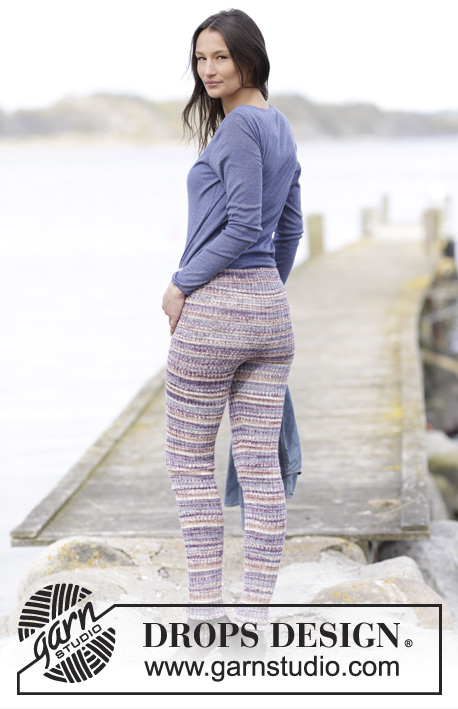 |
Knitted DROPS tights with rib in "Fabel". Size: S - XXXL.
DROPS 165-32 |
|
|
INCREASE TIP: Inc on each side of 2 K sts by working 1 YO. On next round work YOs twisted (i.e. work in back loop of st). Work the inc sts in rib, i.e. K first 2 sts inc, and P the next 2 sts etc. DECREASE TIP: Work until 2 sts remain before marker, then K 2 tog and K 2 twisted tog (work in back loop of st) (= 2 sts dec). ---------------------------------------------------------- TIGHTS: Worked in the round, top down. Rounds start mid back. Cast on 216-240-256-280-304-344 sts on circular needle size 2.5 mm with Fabel. Insert 1 marker at beg of round (= mid back) and 1 marker after 108-120-128-140-152-172 sts (= mid front). Work rib from mid back as follows: K 1, * P 2, K 2 *, repeat from *-*, finish with P 2 and K 1. When piece measures 5 cm, work an elevation at the back as follows: Work 11 sts in rib, turn, tighten yarn, work 22 sts in rib on return, turn, tighten yarn, work 32 sts in rib. Continue like this by working 10 sts more on every turn until a total of 162-182-202-202-242-262 sts have been worked. Turn, continue in the round over all sts again until piece measures 21-23-24-26-28-30 cm mid front. On next round, inc 1 st on each side of the middle 2 sts at the front and back – SEE INCREASE TIP! Repeat inc on every other round a total of 10-10-12-12-13-13 times = 256-280-304-328-356-396 sts. When piece measures 27-29-31-33-35-37 cm mid front, cast off the first 7-7-7-9-9-9 sts, slip 114-126-138-146-160-180 sts on 1 stitch holder (= leg), leave the next 14-14-14-18-18-18 sts on the needle (= gusset), slip 114-126-138-146-160-180 sts on 1 stitch holder (= leg), cast off the remaining 7-7-7-9-9-9 sts. Then work 9-10-11-12-13-14 cm rib over the 14-14-14-18-18-18 sts for gusset, cast off with K over K and P over P and fasten them to the 14-14-14-18-18-18 sts cast off mid back. LEG: Slip the 114-126-138-146-160-180 sts from one stitch holder on a short circular needle size 2,5 mm, pick in addition up 22-26-30-34-36-36 sts along one side of the gusset = 136-152-168-180-196-216 sts. Continue rib - insert 1 marker on inside of leg. When leg measures 5 cm, dec 1 st on each side of marker - READ DECREASE TIP. Dec every 10th-8th-6th-6th-5th-4th round 24-30-36-40-46-54 times in total = 88-92-96-100-104-108 sts. When leg measures 78-79-80-81-82-83 cm (try when working, adjust leg length), loosely cast off with K over K and P over P. Slip sts from the other leg back on needle and work as first leg. |
|
|
Have you made this or any other of our designs? Tag your pictures in social media with #dropsdesign so we can see them! Do you need help with this pattern?You'll find tutorial videos, a Comments/Questions area and more by visiting the pattern on garnstudio.com. © 1982-2024 DROPS Design A/S. We reserve all rights. This document, including all its sub-sections, has copyrights. Read more about what you can do with our patterns at the bottom of each pattern on our site. |
|
With over 40 years in knitting and crochet design, DROPS Design offers one of the most extensive collections of free patterns on the internet - translated to 17 languages. As of today we count 304 catalogues and 11422 patterns - 11422 of which are translated into English (UK/cm).
We work hard to bring you the best knitting and crochet have to offer, inspiration and advice as well as great quality yarns at incredible prices! Would you like to use our patterns for other than personal use? You can read what you are allowed to do in the Copyright text at the bottom of all our patterns. Happy crafting!







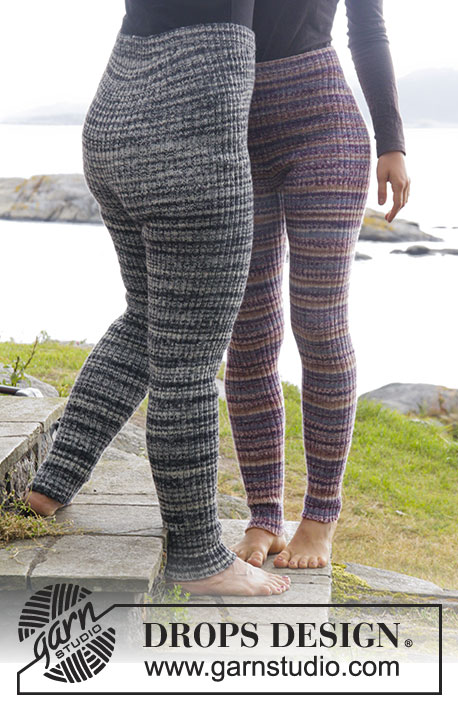


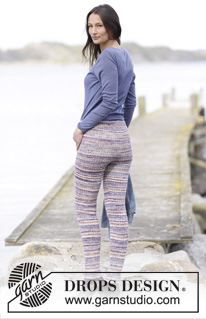
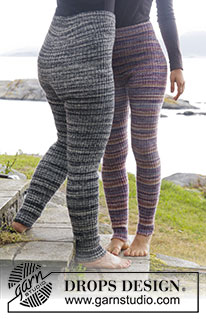



































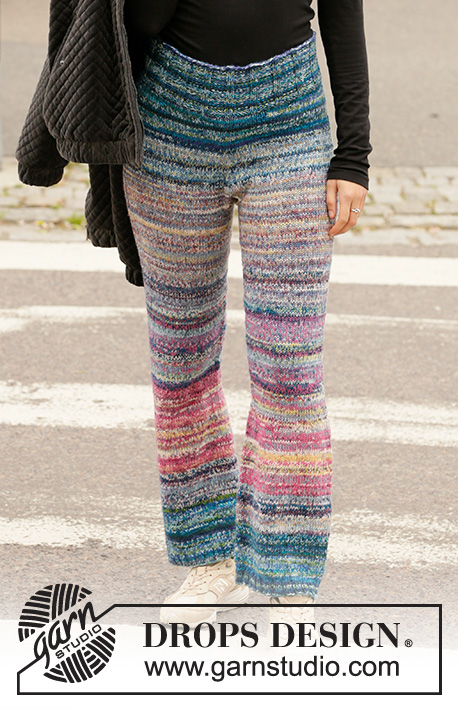

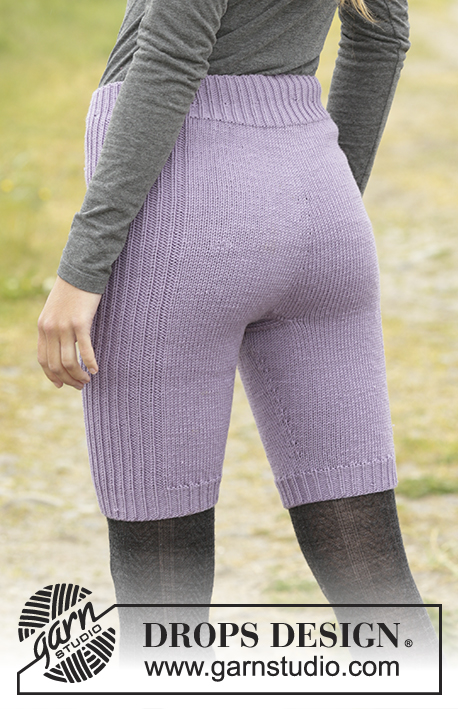







Comments / Questions (104)
Regarding DROPS pattern number 165-32. It says too increase one stitch on each side of the middle 2 stitches both front and back in the round. Does this mean to increase with a yarn over before the first knit stitch and after the second knit stitch or increase with a yarn over before and after the first stitch and before and after the second knit stitch? The wording is confusing. Thank you for your help
17.08.2021 - 21:33DROPS Design answered:
Dear Ginny, yu will have to increase before and after the two knit stitch that is at the middle front and at the middle back. Happy Stitching!
17.08.2021 - 23:23I have a question regarding the increases at the front & back - your instructions say "Work the inc sts in rib, i.e. K first 2 sts inc, and P the next 2 sts etc." - but this will obviously totally break the established knit 2, purl 2 rib pattern, I mean one would have to increase 4 sts at a time to keep the established 2:2 pattern, but of course 4 sts a bit too much to increase at once. Can you help / explain this a bit?
02.08.2021 - 11:24DROPS Design answered:
Dear Melina, it will break the pattern (in some sizes) before the middle K2 and after these middle K2, but the increased stitches should be work gradually into the rib so that the rib K2,P2 continues by and by as before on either side of the middle 2 sts on mid front and mid back. Hope this will help, happy knitting!
02.08.2021 - 13:15Do you help customers to knit cable wool footed tights?
14.04.2021 - 15:10DROPS Design answered:
Dear Wing, you can find a number of patterns for socks and leggings, but we cannot modify them to each individual request. You are welcome to combine them, however. Happy Knitting!
14.04.2021 - 17:06Hei! Skal det settes strikk i livet på denne buksa? Hvis ikke, har dere en annen ullbukse til dame som strikkes i ren ull og har strikk i livet?
21.02.2021 - 19:35DROPS Design answered:
Hei Kirsti, Denne oppskriften har ikke strikk i livet, fordi rillestrikk i livet er elastisk. Du kan søke andre strikket bukser i boksen på toppen av oppskriften, på høyre siden. God fornøyelse!
22.02.2021 - 07:39I am confused. I am at the point where I have bound off the first 7 stitches have put 126 stitches on holder one, left 14 stitches on needles, put 126 stitches on holder two, and should be ready to bind off the last 7 stitches, but.... My yarn is back at the end of the first bound off 7 stitches, before the first held stitch group and the 14 stitches left on needles. Am I supposed to work the 14 stitches before taking off the second group of held stitches? And then bind off last 7 stitches?
12.10.2020 - 07:21DROPS Design answered:
Dear Mrs Hardeman, you should cast off 14 sts on mid front and mid back for crotch and have 126 sts for each leg, ie you cast off the first 7 sts on the round, work 125 sts (+ the one on needle there are now 126 sts for first leg), cast off the next 14 sts, work 125 sts (+ the one on needle there are now 126 sts for 2nd leg), and cast off the last 7 sts (cut yarn and pull it into last stitch). Happy knitting!
12.10.2020 - 09:00Id love to knit this pattern can you use 100% wool instead to polymide?
05.10.2020 - 02:06DROPS Design answered:
Dear Mrs Pryal, use our yarn converter to see the different yarn alternatives - the tights are here worked with a sock yarn - remember that choosing another yarn will give different results due to the differences of fibers. read more about alternatives here. Happy knitting!
05.10.2020 - 11:17Möchte die Leggins 165-3 mit fabel wolle in grösse xxxl stricken . Muster angefertigt mit 26 Maschen und nadelstärke 3,5 = Ergibt 8 cm. Mit nadelstärke 4,0 sind die maschen sehr gross und es sieht nicht besonders hübsch aus. Wieviel wolle benötige ich bei 430 Maschen und wie sieht es mit den Abnahmen aus? Erbitte ihre rückantwort.
14.05.2020 - 17:44DROPS Design answered:
Liebe Frau Herthel, die Maschenprobe muss stimmen, damit die Leggins auch anpassen - hier lesen Sie mehr über Maschenprobe. Versuchen Sie, Ihre Maschenprobe zu waschen/spannen/trocken lassen und messen Sie sie wieder, sollte es immer nicht stimmen, dann mit anderen Nadeln noch einmal versuchen. Ihr DROPS Laden hat sicher noch mehr Tipps für Sie, gerne wird man Ihnen dort weiterhelfen. Viel Spaß beim stricken!
15.05.2020 - 08:31Hei Ser at det er forskjell på str. S på denne bukse og på Rhoda på ant. cm mål rundt hoften. Str. S vil passe meg hvis jeg strikker Rhoda, men ser ut som om jeg må gå opp en str. til M på denne hvis den skal passe, samtidig står det på denne at en skal strikke den str. en pleier å bruke og det er S. Så jeg er litt forvirret ?
31.03.2020 - 15:34DROPS Design answered:
Hei Britt. Buksene Rhoda og So Cosy har forskjellige strikketeknikker. So Cosy er strikket med bare vrangborden som vil trekke seg sammen, men er svært elastisk, så strikk den størrelsen du pleier å bruke. God Fornøyelse!
17.04.2020 - 09:2620 - 08:28: Kysyn vielä,en saanut vastausta Hei, tein kahdet housut tällä mallilla peräkkäin, ensin m koko ja sitten s koko. Kummassakin vyötäröstä tuli aivan liian iso. Sopisivat raskaus vatsalle. Mitä kannattaisi tehdä, että tulisi istuvammat. Vaikea sanoa onnistuisiko vähentää kaikkia silmukoita vielä yhden koon verran, mahtuisiko sitten jalkaan. Onko neuvoa mitä tehdä, jos yritän vielä. Niitä housuja ei voi käyttää kun tippuvat päältä.
03.02.2020 - 06:10DROPS Design answered:
Hei, voisit vielä yrittää neuloa vyötärön osuus puikoilla nro 2, jotta siitä tulisi hieman kapeampi. Voisit myös luoda työn alkuun vähemmän silmukoita ja sitten lisätä nämä silmukat työhön vyötärön jälkeen.
10.02.2020 - 17:48Prjónaðar Drops leggings fyrir herra úr Fabel s eða m stærð langar að vita hvað fer mikið garn í þetta
09.01.2020 - 19:54DROPS Design answered:
Þetta mynstur er einungis gefið upp í dömu stærð á síðunni okkar. Þú getur fengið leiðbeiningar um breytingu á efnismagni í næstu DROPS verslun.
13.01.2020 - 10:24